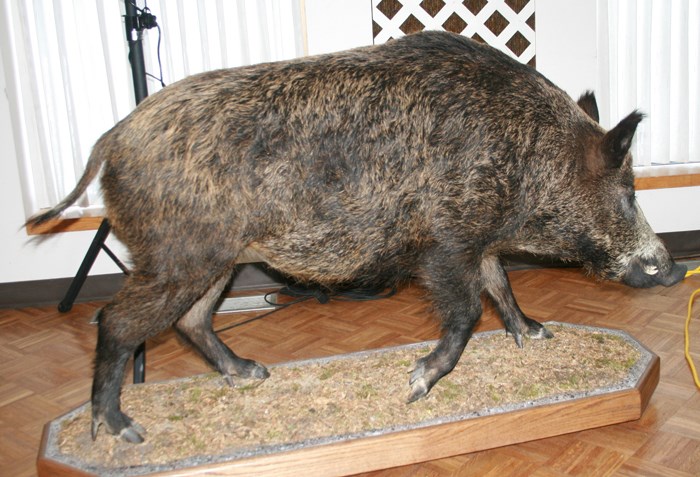Feral wild pigs are becoming a concern for wildlife management across Canada.That was the message from Ryan Brook who spoke at the Saskatchewan Wildlife Federation Convention held in Yorkton last week.
But to undertake management and control you need to have an understanding of the extent of the problem, and that is what the Feral Boars in Canada Collaring Project is designed to provide.
“It is baseline information,” said Brook, adding they hope to gather data on populations, and distribution, and knowledge regarding the ecology of the feral stock.
In other regions feral boars have become a major issue.
Brook pointed to the United States.
“Texas has well over three million pigs,” he said, adding the situation could happen here.
“… About half of all RMs (rural municipalities in Saskatchewan) have pigs,” said Brook. “… We could well be in a position to have more pigs than people.”
In a random telephone survey of 3000 rural residents across Canada it was found “every single province had (wild) pigs … Everybody is reporting them.”
“We’re starting to see a pretty broad distribution of pigs,” said Brook.
The pigs are not a native species to Canada.
“We know farms are the source of this,” said Brook, adding the pigs are either escapees, and in some cases there are reports of farmers cutting fence and letting stock go rather than to continue to look after them.
Even on well-ran wild boar farms it is estimated two to three per cent of stock escapes, said Brook.
While the project is collaring pigs so they can be tracked, it is not proving highly successful. Brook said pigs are very hard to catch, generally requiring netting from helicopters.
And because of the pig’s thick neck the collars often do not stay on long term.
Only one of five stayed in place in 2015.
“This year we’re hoping to get 20 collared,” said Brook.
So Brook hopes people will add to the date being collected by telling the study “what they see on the land,” adding that will “provide some great information where they are.”
Those with information can share it via Facebook by searching Wild Hog Watch (Feral Wild Boars)
Feral pigs are highly adaptable so can find success almost anywhere.
“Habitat is a really poor predictor of where pigs are,” said Brook. “… There is no bad habitat per say.”
Brook said in Europe, and now Ontario, wild pigs are even establishing themselves in urban setting. He said many city parks in France have pigs.
“We’ve found a whole range of different habitats so far,” again noting highest populations at present are tied to where farms are where the pigs could have initially escaped from.
Since Saskatchewan has the largest number of wild boar farms the province has the highest population of feral hits too.
But, given the opportunity to have populations grow, the range will grow, as pigs will forage food from a range of sources.
Brook reported on one pig killed that had a stomach full of frogs. They have also been known to kill deer, especially the young, for food, and of course will eat from farm crops.
Brook said there is clearly a need for a vision of what to do about wild pigs?
“The big question in my mind … what is the plan with this in the long term? What is the vision for these guys?” he asked.
“We all have a big challenge with this.”



